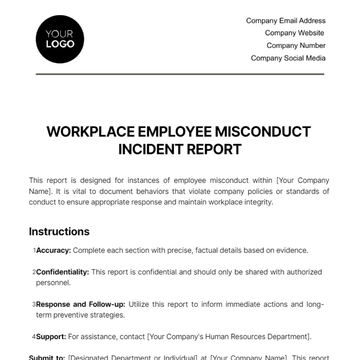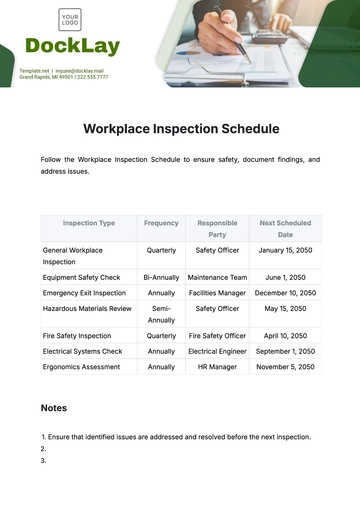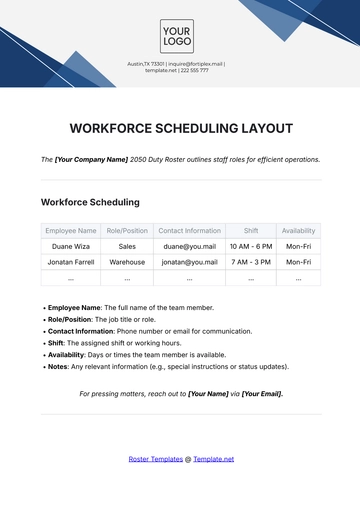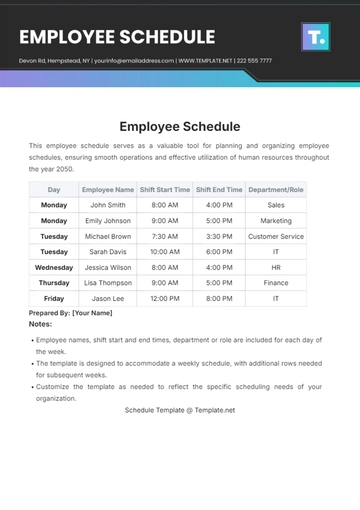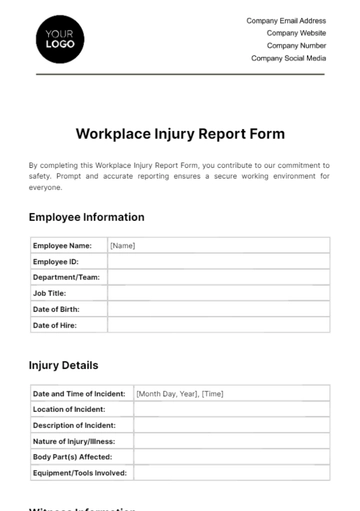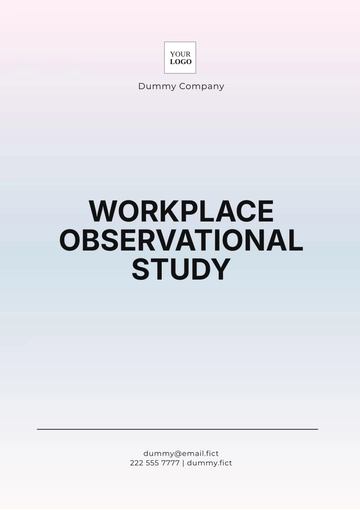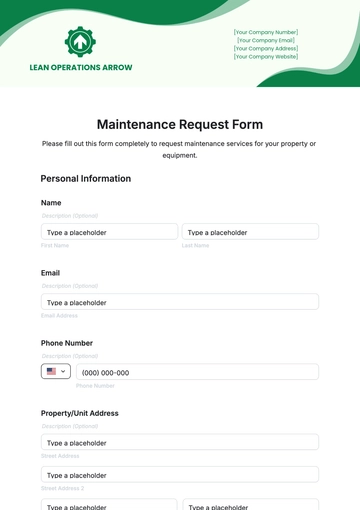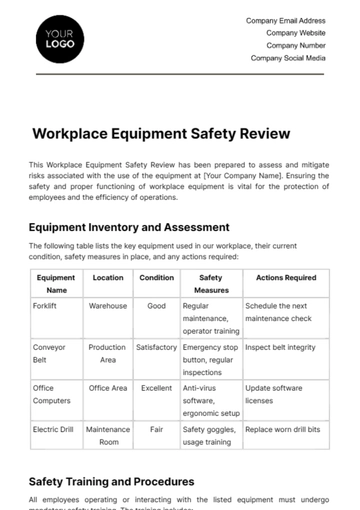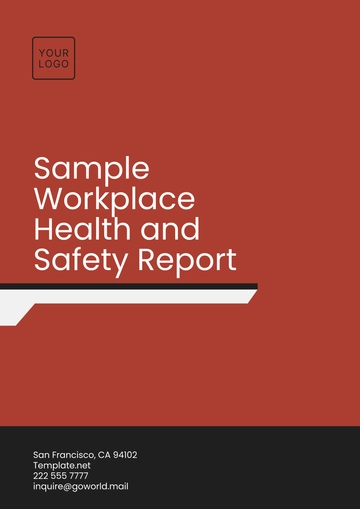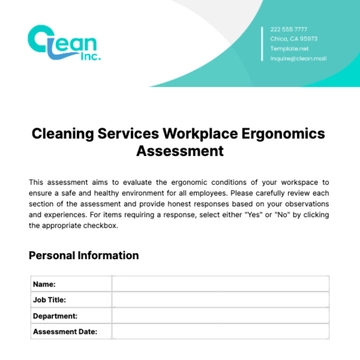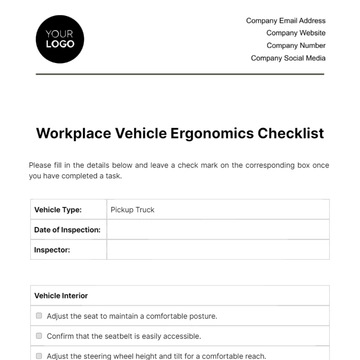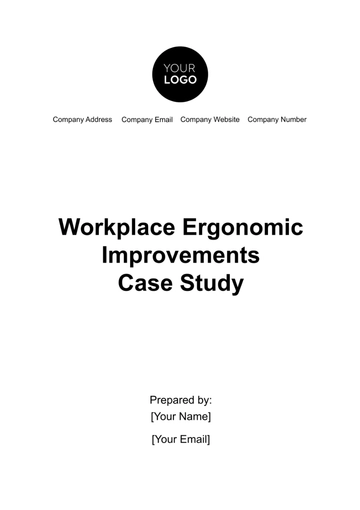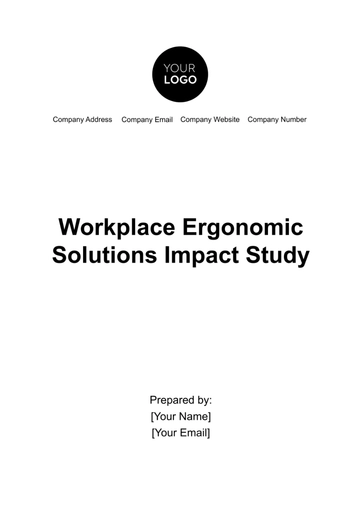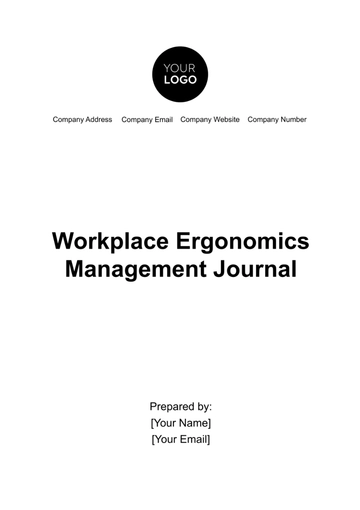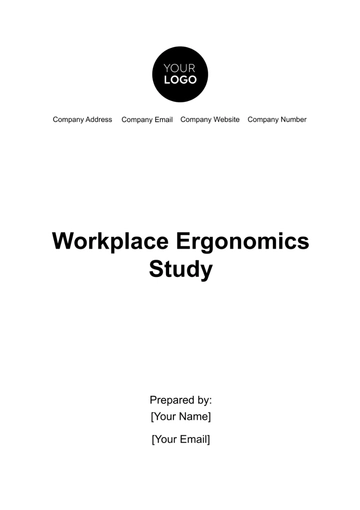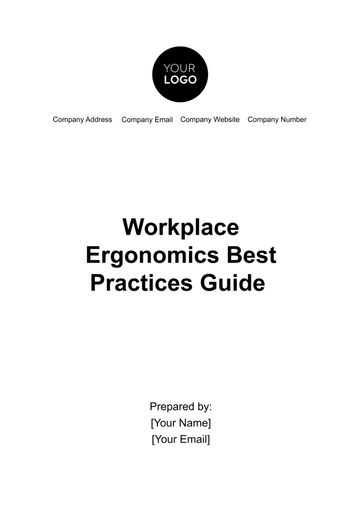Free Workplace Ergonomics Feasibility Study
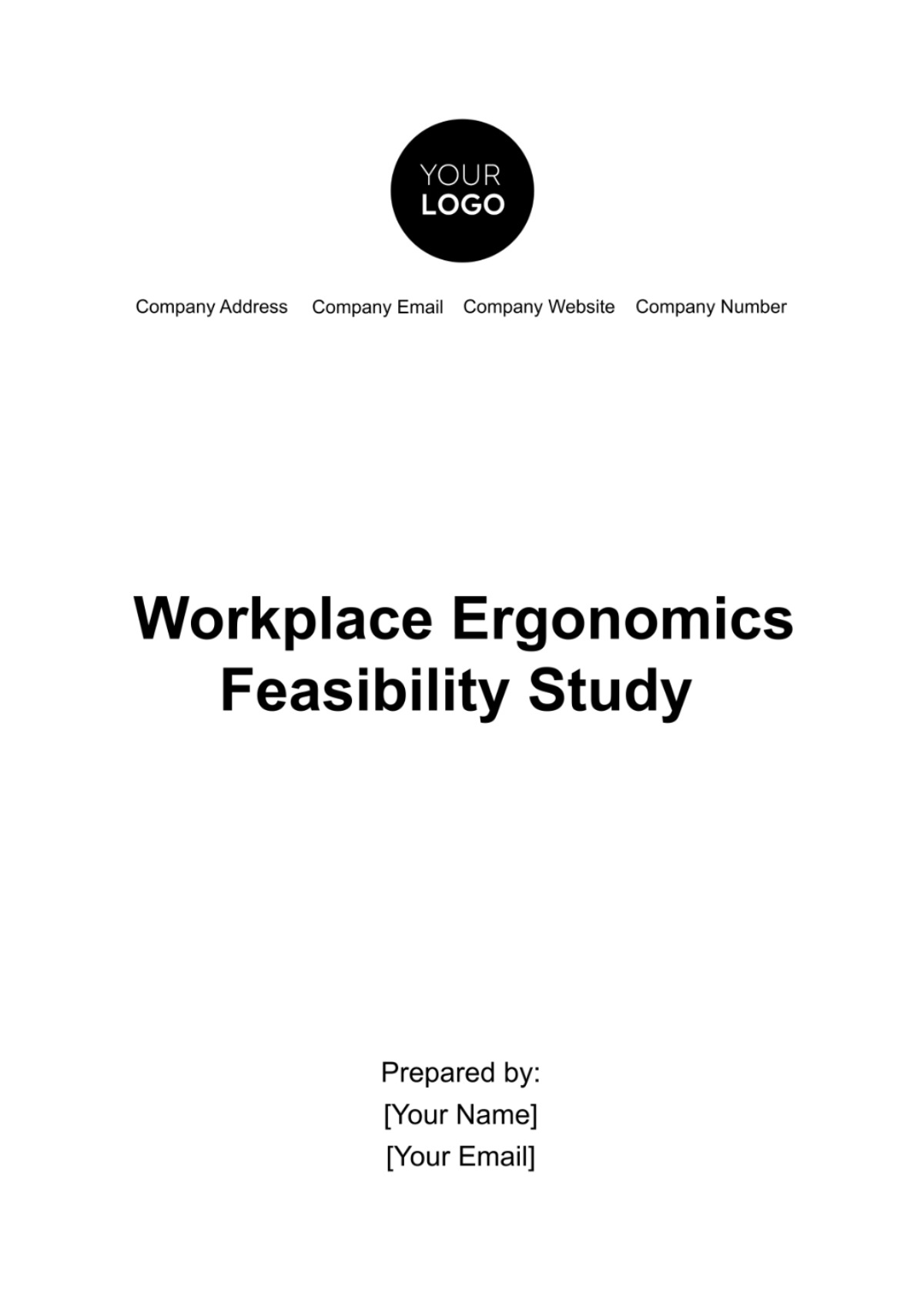
I. Executive Summary
The goal of this study is to foster an environment that prioritizes health, mitigates musculoskeletal risks, and amplifies company productivity. An analysis revealed specific ergonomic challenges within our workplace, from suboptimal workstations to potential regulatory compliance gaps. These findings underscore the urgency of targeted interventions to address these challenges effectively.
To create a healthier work environment, the study proposes actionable recommendations, including phased furniture introduction, training programs, and ongoing monitoring. The collective implementation aims to foster a culture of well-being. Envisioning a workplace where employees experience improved comfort and heightened job satisfaction, the study anticipates positive ripple effects across the company.
II. Introduction
A. Contextual Background
Our workplace functions as a critical element in our operational ecosystem, where employee well-being and company success is of paramount importance. This feasibility study serves as a pragmatic exploration of our current workspace, with a specific emphasis on the integration of ergonomic principles. Our aim is to understand the nuanced dynamics of our work environment, strategically leveraging ergonomic considerations to enhance operational efficiency.
B. Study Objectives
The key objectives of the study are the following:
Identify and Address Ergonomic Challenges
Conduct a comprehensive examination to identify existing ergonomic challenges within the workplace, prioritizing the enhancement of employee well-being and ensuring alignment with regulatory standards.
Propose Practical Interventions
Derive actionable insights from the study findings to formulate practical and effective interventions, aiming to rectify identified ergonomic issues and optimize the overall ergonomic landscape of the company.
Formulate an Actionable Implementation Plan
Develop a strategic and detailed implementation plan, based on recommended interventions, fostering a seamless integration of ergonomic improvements, and ensuring sustained compliance with regulatory standards.
C. Scope and Limitations
The scope encompasses the entire company landscape, from individual workstations to communal spaces, aiming to holistically address ergonomic concerns. Simultaneously, limitations such as budget constraints and time considerations serve as guiding parameters.
D. Company Commitment
Beyond regulatory requisites, we are actively cultivating a workplace culture that prioritizes the holistic well-being of our employees. The integration of ergonomic principles aligns seamlessly with our company values, fostering an environment that not only emphasizes physical health but also bolsters mental well-being.
III. Background and Context
Embedded within the core of our company identity is a commitment to fostering an environment where our employees thrive. Recognizing that the workplace is not merely a physical space but a dynamic ecosystem, we initiated a study to delve into the intricacies of our current work environment. The study stems from the need to address issues within our ergonomic practices, ranging from suboptimal workstations to collaborative spaces that may fall short of facilitating optimal performance and employee well-being.
IV. Methodology
A. Study Design
Employing a mixed-methods approach, this study blends qualitative and quantitative research techniques to provide an understanding of ergonomic considerations in our workplace.
B. Data Collection Instruments
Workplace Assessments
Structured checklists and observational protocols were developed to systematically document ergonomic issues in individual workspaces and communal areas.
Surveys
A customized survey instrument was designed to capture quantitative data on employee experiences, perceptions, and specific ergonomic challenges.
Interviews
Semi-structured interview guides were employed to facilitate in-depth discussions, allowing participants to articulate their experiences and insights regarding workplace ergonomics.
Ergonomic Evaluations
Professional ergonomic assessment tools, guided by industry standards, were utilized to objectively identify specific ergonomic risks and areas for improvement.
C. Sampling Strategy
A systematic sampling approach was employed to evaluate a representative selection of individual workstations and communal spaces, ensuring a thorough assessment of ergonomic challenges.
D. Criteria for Identifying Ergonomic Risk Factors
Frequency and Severity
Established criteria were applied to prioritize ergonomic issues based on the frequency of occurrence and the severity of their impact on employee well-being.
Compliance Gaps
A comparative analysis was conducted to identify areas where company practices fell short of established regulatory ergonomic standards.
Employee Feedback
Thematic analysis was employed to extract key insights from qualitative data obtained through employee surveys and interviews.
E. Data Analysis
Quantitative Data
Statistical analysis, including descriptive statistics and inferential tests, was employed to analyze survey data and workplace assessment results.
Qualitative Data
Thematic analysis was applied to qualitative data obtained from interviews and open-ended survey responses, facilitating the identification of recurring patterns and themes.
F. Ethical Considerations
Confidentiality
Measures were implemented to ensure the anonymity of participants, protecting their privacy and fostering an environment conducive to open and honest feedback.
Informed Consent
A rigorous process of obtaining informed consent was followed, providing participants with detailed information about the study's purpose, procedures, and potential implications.
V. Ergonomic Risk Assessment Findings
A. Identified Ergonomic Challenges
Suboptimal Workstation Configurations
Workplace assessments and evaluations revealed inadequacies in the design of individual workstations, impacting employee posture and comfort.
Inadequate Seating Options in Communal Spaces
The study identified a lack of ergonomic seating options in communal areas, contributing to discomfort and potential musculoskeletal issues during collaborative activities.
Insufficient Height Adjustability in Workstations
Findings highlighted a limitation in the height adjustability of workstations, impacting employees' ability to customize their workspace for optimal comfort and efficiency.
B. Ergonomic Issues
High Frequency of Repetitive Motion Injuries
Analysis of employee feedback and ergonomic evaluations identified a high frequency of repetitive motion injuries, signaling a need for targeted interventions to reduce associated risks.
Severe Discomfort Reported in Specific Work Areas
Certain work areas were consistently reported as sources of severe discomfort, indicating a critical need for ergonomic improvements to enhance employee well-being.
Low Awareness of Ergonomic Best Practices
Survey responses indicated a low level of awareness among employees regarding ergonomic best practices, emphasizing the necessity of education and training programs.
C. Compliance Discrepancies
Non-compliance with Desk Height Standards
The study uncovered instances where desk heights did not adhere to established ergonomic standards, underscoring the importance of aligning with regulatory guidelines.
Lack of Ergonomic Training Documentation
Compliance gaps were identified in the absence of documented evidence of ergonomic training, necessitating the establishment of a comprehensive training documentation system.
Absence of Periodic Ergonomic Assessments
The study revealed a lack of regular ergonomic assessments, indicating a need to implement ongoing monitoring mechanisms to ensure sustained compliance and improvement.
VI. Cost-Benefit Analysis
The following table and chart illustrates the projected costs, anticipated benefits, and net financial impact of each strategic measure. These figures are instrumental in guiding resource allocation and decision-making processes, ensuring that investments align with company goals and yield significant returns.
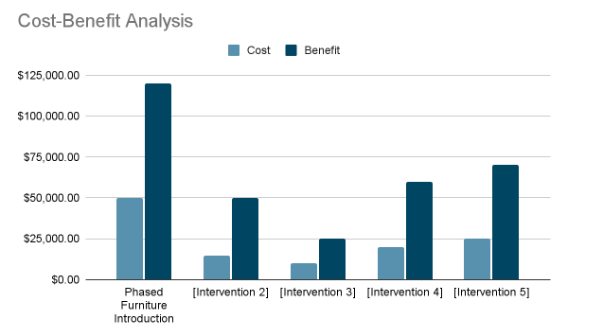
Intervention | Cost | Benefit | Net Benefit |
Phased Furniture Introduction | $50,000 | $120,000 | $70,000 |
This cost-benefit analysis serves as a strategic tool for decision-making, offering insights into the financial impact of proposed interventions. The projected net benefits demonstrate the potential return on investment and underscore the importance of investing in ergonomic measures.
VII. Recommendations
A. Furniture
Customization and Ergonomic Accessories
Implement adjustable chairs, sit-stand desks, and ergonomic accessories like monitor stands and keyboard trays to cater to individual ergonomic needs.
Quality Assurance
Collaborate with reputable ergonomic furniture suppliers, ensuring products meet industry standards and carry necessary ergonomic certifications.
Training Sessions
Conduct comprehensive training sessions to educate employees on the proper utilization and adjustment of new ergonomic furniture.
B. Training Programs
Interactive Online Module
Develop an interactive and accessible online training module covering ergonomic best practices, providing flexibility for employees to engage at their own pace.
Workshops and Specialist-led Sessions
Organize regular workshops led by ergonomic specialists to reinforce proper posture, workspace habits, and the practical application of ergonomic principles.
Certification Program
Establish a certification program to formally recognize and incentivize employees who complete ergonomic training.
Integration into Onboarding
Integrate ergonomic education seamlessly into the onboarding process for new employees, emphasizing its importance from the outset.
C. Ongoing Monitoring and Feedback Mechanism
Regular Ergonomic Assessments
Implement periodic ergonomic assessments to proactively identify evolving challenges and areas for continuous improvement.
Confidential Feedback Channel
Establish a confidential and easily accessible feedback mechanism, allowing employees to report ergonomic concerns without fear of reprisal.
Periodic Surveys
Conduct periodic surveys to gauge the effectiveness of implemented interventions, gathering valuable insights directly from the workforce.
Cross-functional Ergonomic Committee
Form a cross-functional ergonomic committee responsible for overseeing ongoing monitoring efforts, ensuring diverse perspectives are considered.
D. Company Culture Integration
Leadership Engagement
Foster leadership engagement through regular communication on the intrinsic value of ergonomic practices in fostering a healthy and productive work environment.
Policy Integration
Embed ergonomic principles into company policies and guidelines, making it an integral part of the company's culture.
Recognition and Rewards
Establish a recognition program that acknowledges departments or teams showcasing outstanding commitment to ergonomic best practices.
Holistic Wellness Program
Integrate ergonomic initiatives into a broader workplace wellness program, emphasizing the interconnectedness of physical and mental well-being.
VIII. Conclusion
The study has unearthed specific challenges within our workplace, ranging from workstation configurations to compliance gaps. The prioritization of these challenges guided the formulation of strategic recommendations, encompassing phased furniture introduction, training programs, ongoing monitoring, and cultural integration initiatives. The associated cost-benefit analysis underscores the financial feasibility of these measures, emphasizing not only their potential return on investment but also the broader impact on the company's productivity and employee satisfaction.
- 100% Customizable, free editor
- Access 1 Million+ Templates, photo’s & graphics
- Download or share as a template
- Click and replace photos, graphics, text, backgrounds
- Resize, crop, AI write & more
- Access advanced editor
Transform your workplace with Template.net's Workplace Ergonomics Feasibility Study Template. This editable and customizable tool evaluates ergonomic possibilities, enhancing employee well-being and productivity. Seamlessly editable in our Ai Editor Tool, it offers adaptability and precision. Elevate your workspace ergonomics effortlessly with this essential resource. Upgrade your workplace today for optimal performance.
